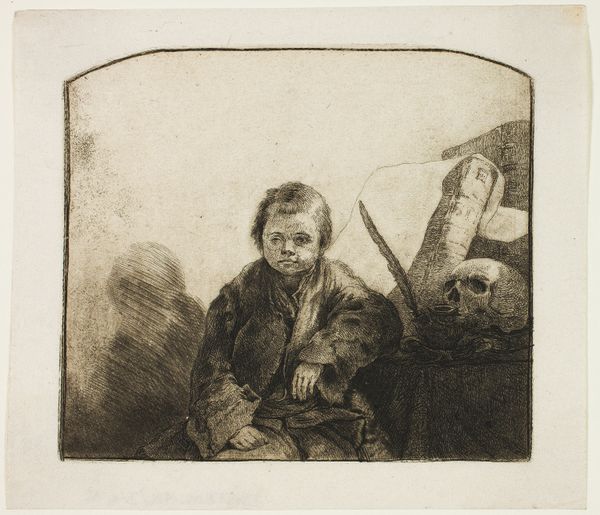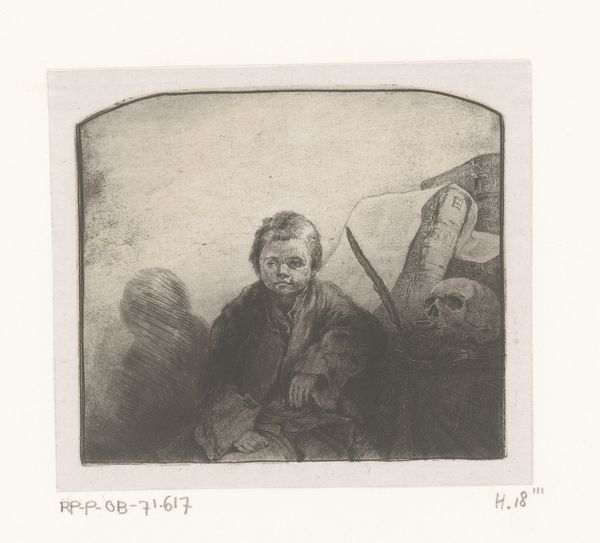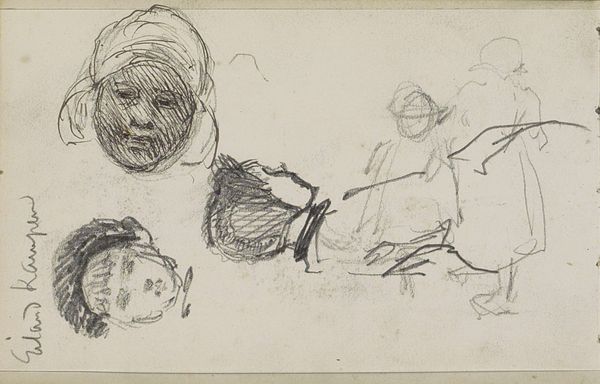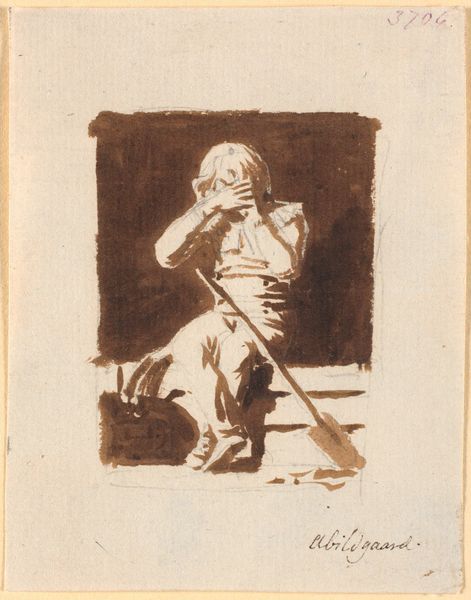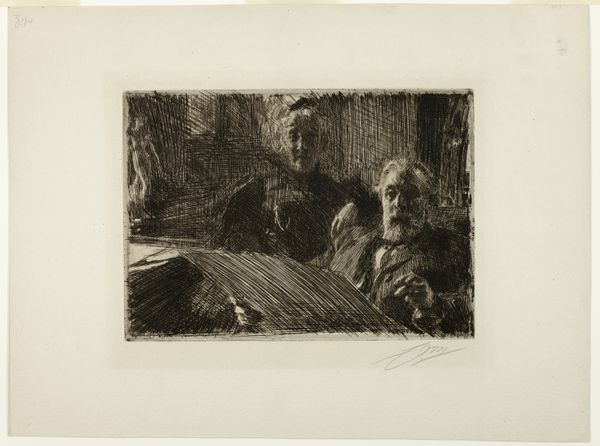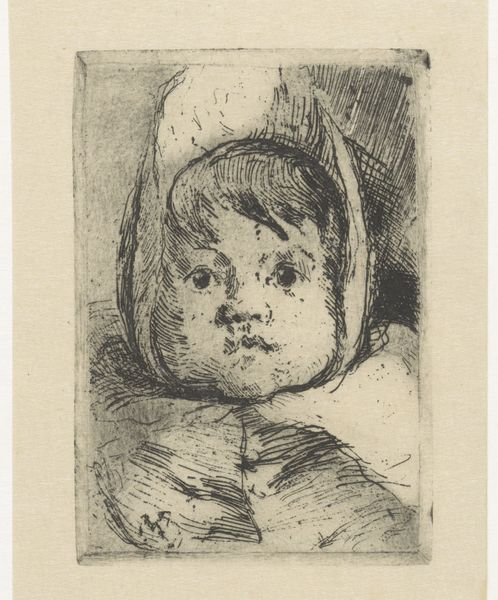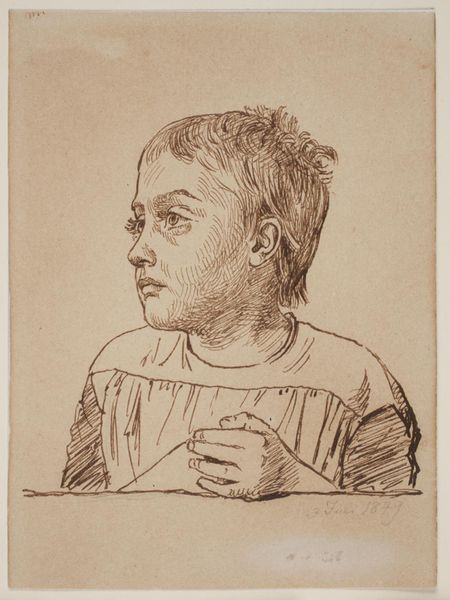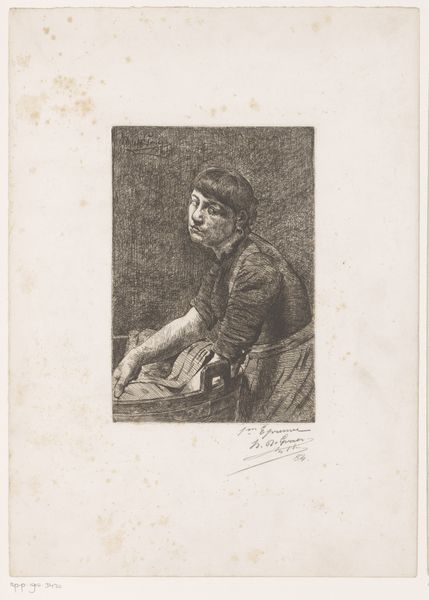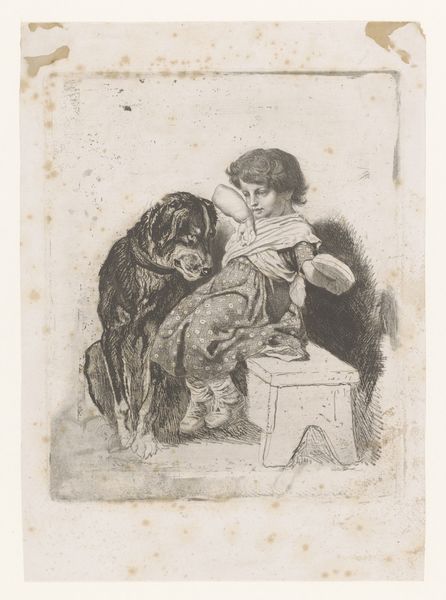
Dimensions: 3 1/16 x 3 3/8 in. (7.8 x 8.65 cm) (image)3 5/8 x 4 in. (9.2 x 10.1 cm) (sheet)
Copyright: Public Domain
Jean-Pierre Norblin de la Gourdaine created this etching, 'The Little Philosopher', in France. Notice how this somber print depicts a child surrounded by symbols of mortality and learning: a skull, books, and a quill. In the 18th century, the Enlightenment was in full swing, emphasizing reason and knowledge. Yet, this image complicates that picture. Is this child wise beyond their years, or burdened by the weight of philosophical concepts? It may reflect a broader societal debate about childhood and education at the time. Was it better to nurture youthful innocence, or to cultivate intellect from a young age? The presence of the skull may serve as a vanitas motif, reminding us that all knowledge and learning are ultimately subject to the passage of time and the inevitability of death. To understand this image more fully, one can research the history of childhood education in 18th-century France, alongside broader philosophical debates. Art, after all, is always contingent on its social and institutional context.
Comments
minneapolisinstituteofart about 2 years ago
⋮
Jean-Pierre Norblin de la Gourdaine was a French painter and printmaker active in Poland in the late 18th century. Norblin's charming miniature etchings, representing mostly male heads, street sellers, and vagabonds, reflect both in subject and technique the profound influence of Rembrandt's prints. Norblin was also drawn to Polish subjects, capturing the unfamiliar, exotic world around him in his depictions of men with colossal fur hats and curled moustaches, Cossacks, and Polish historical figures.
Join the conversation
Join millions of artists and users on Artera today and experience the ultimate creative platform.
